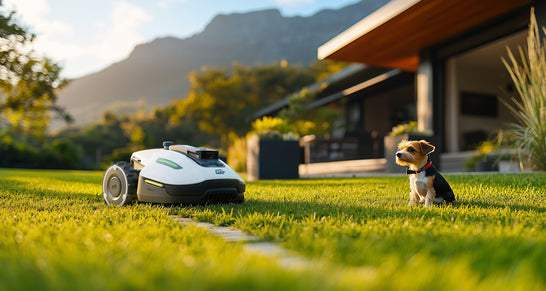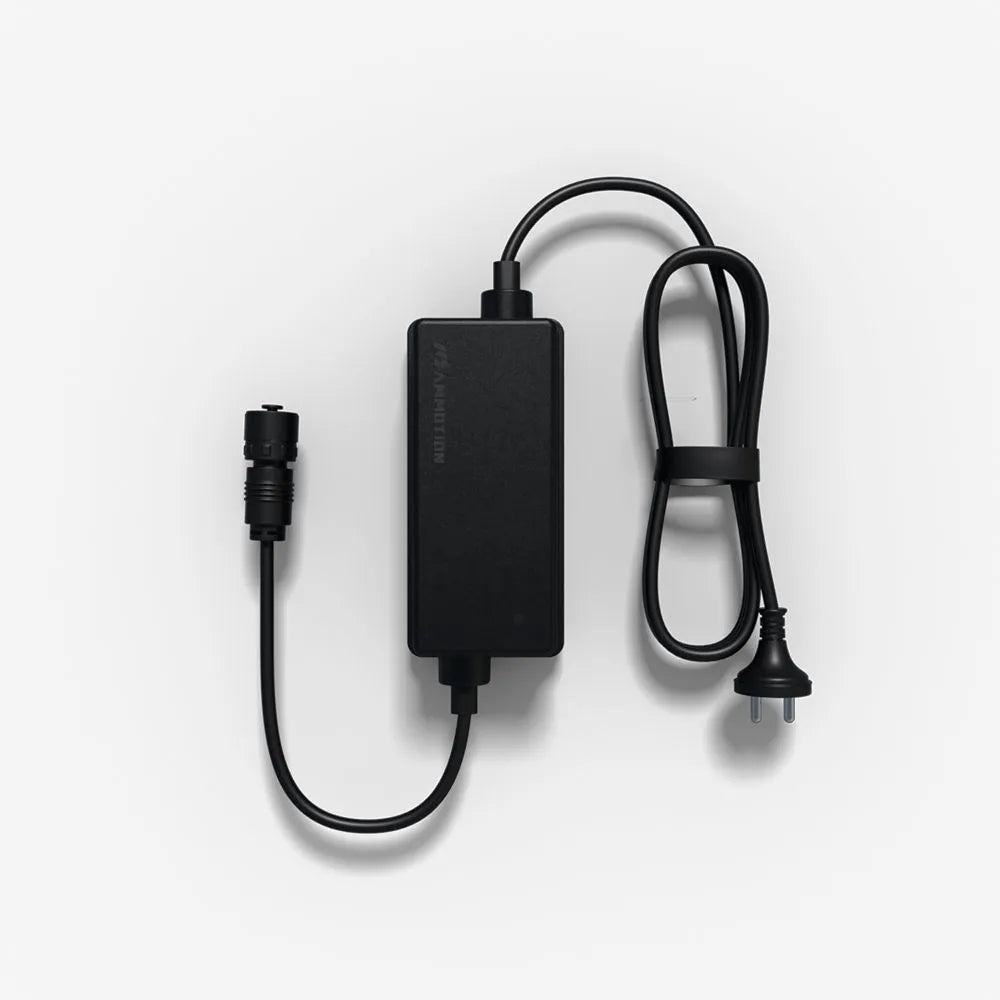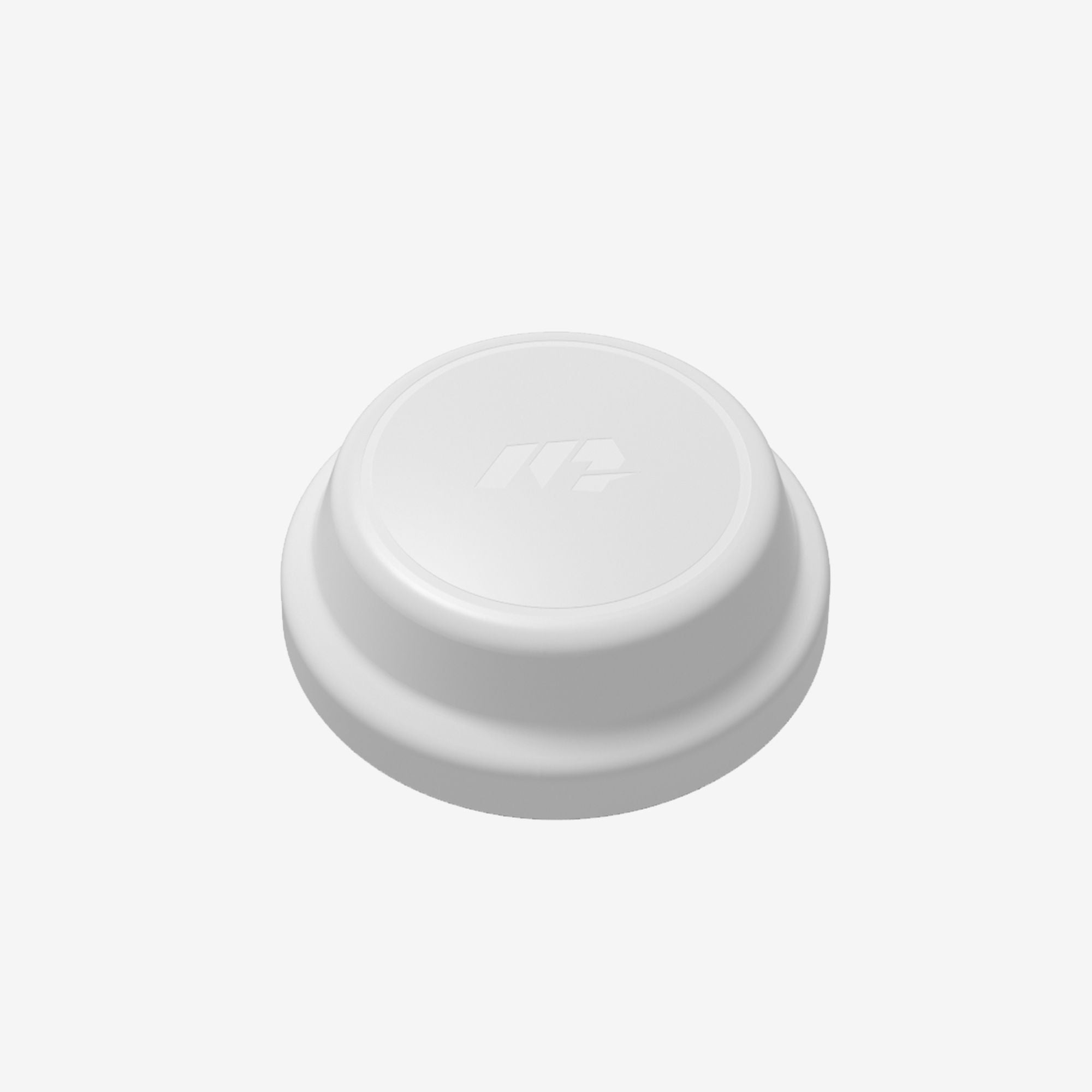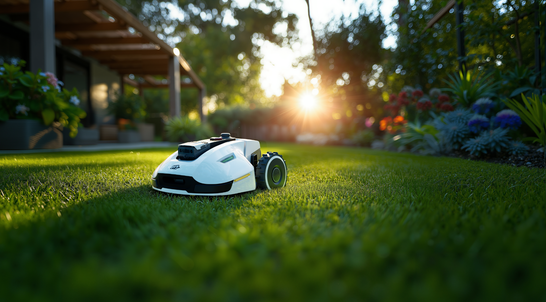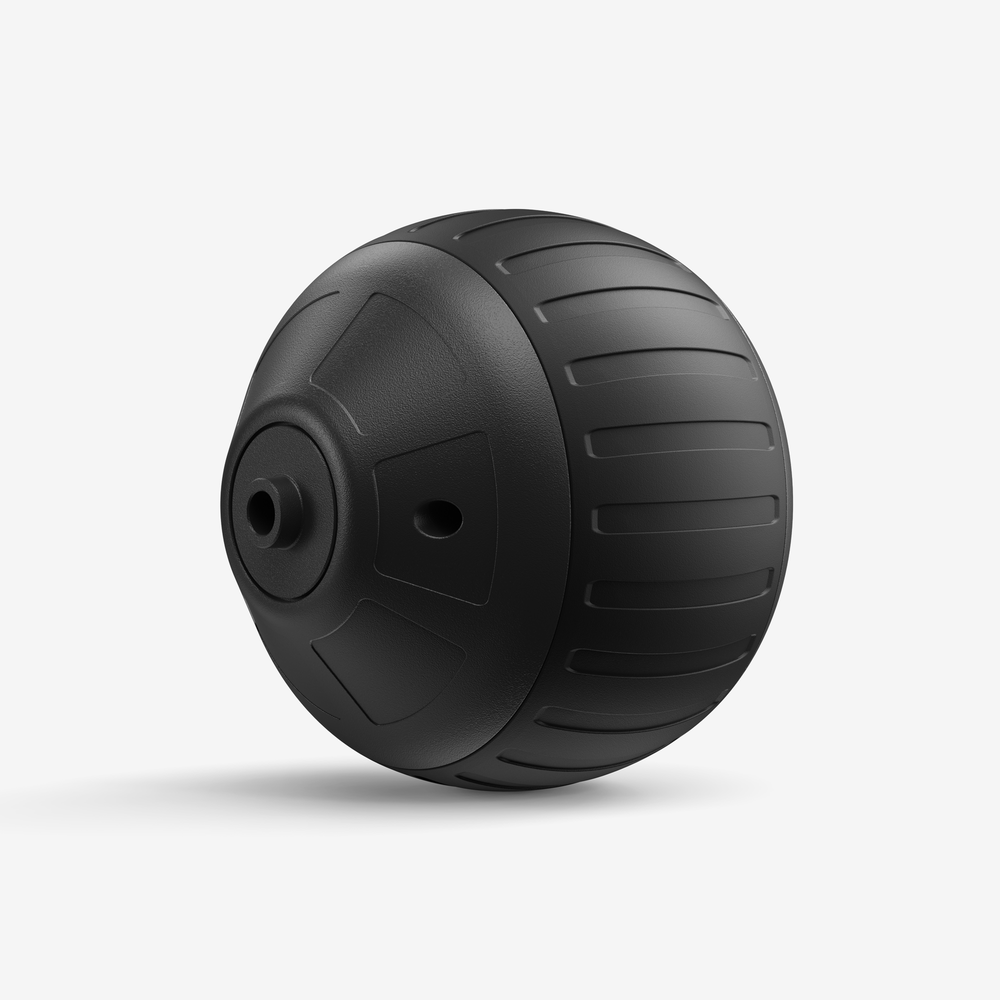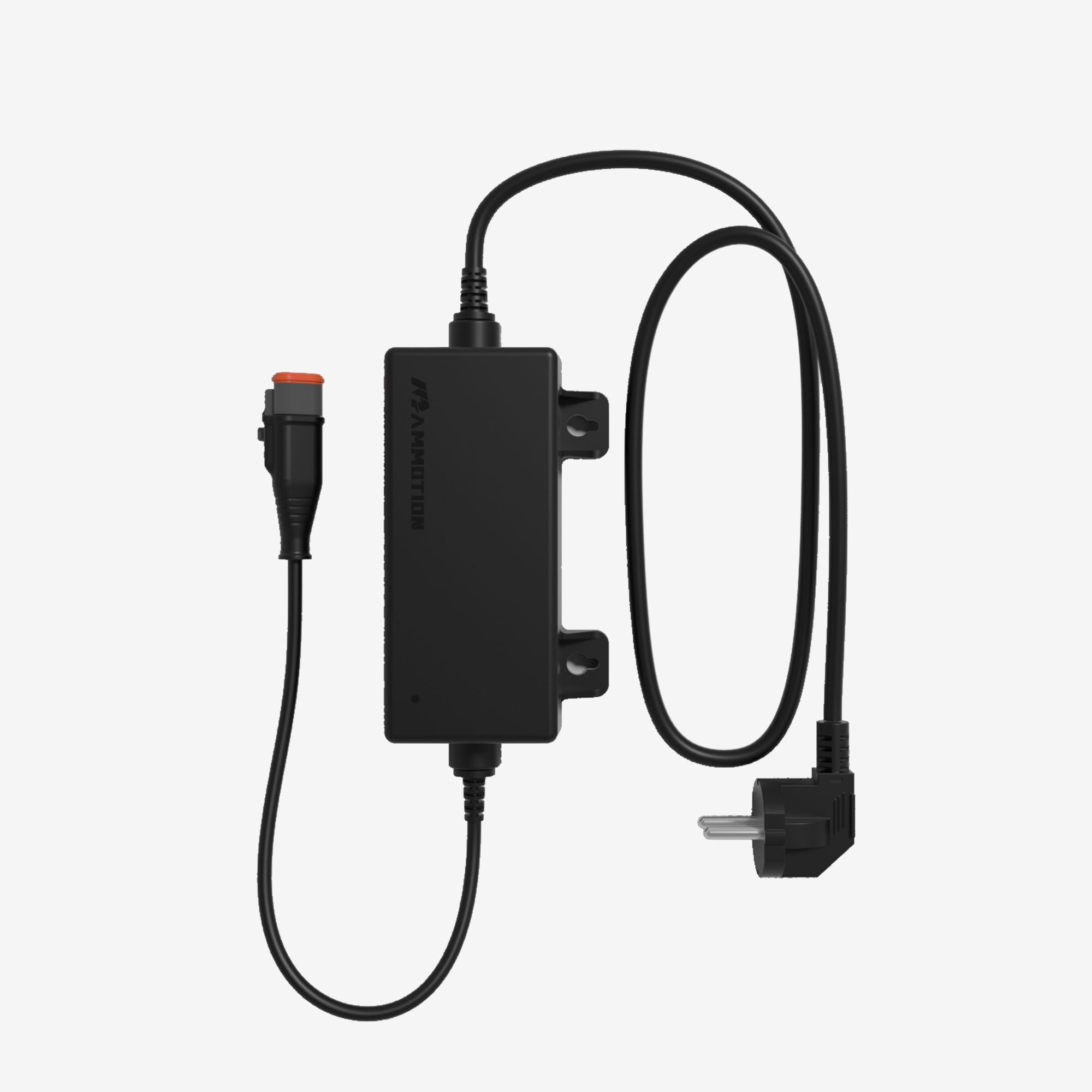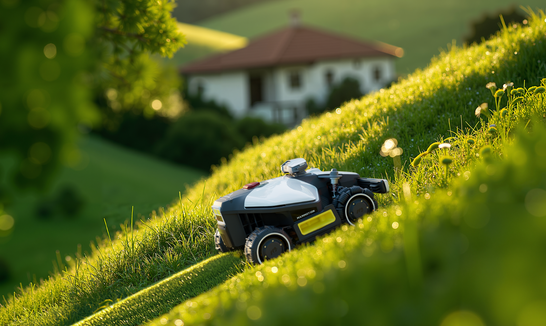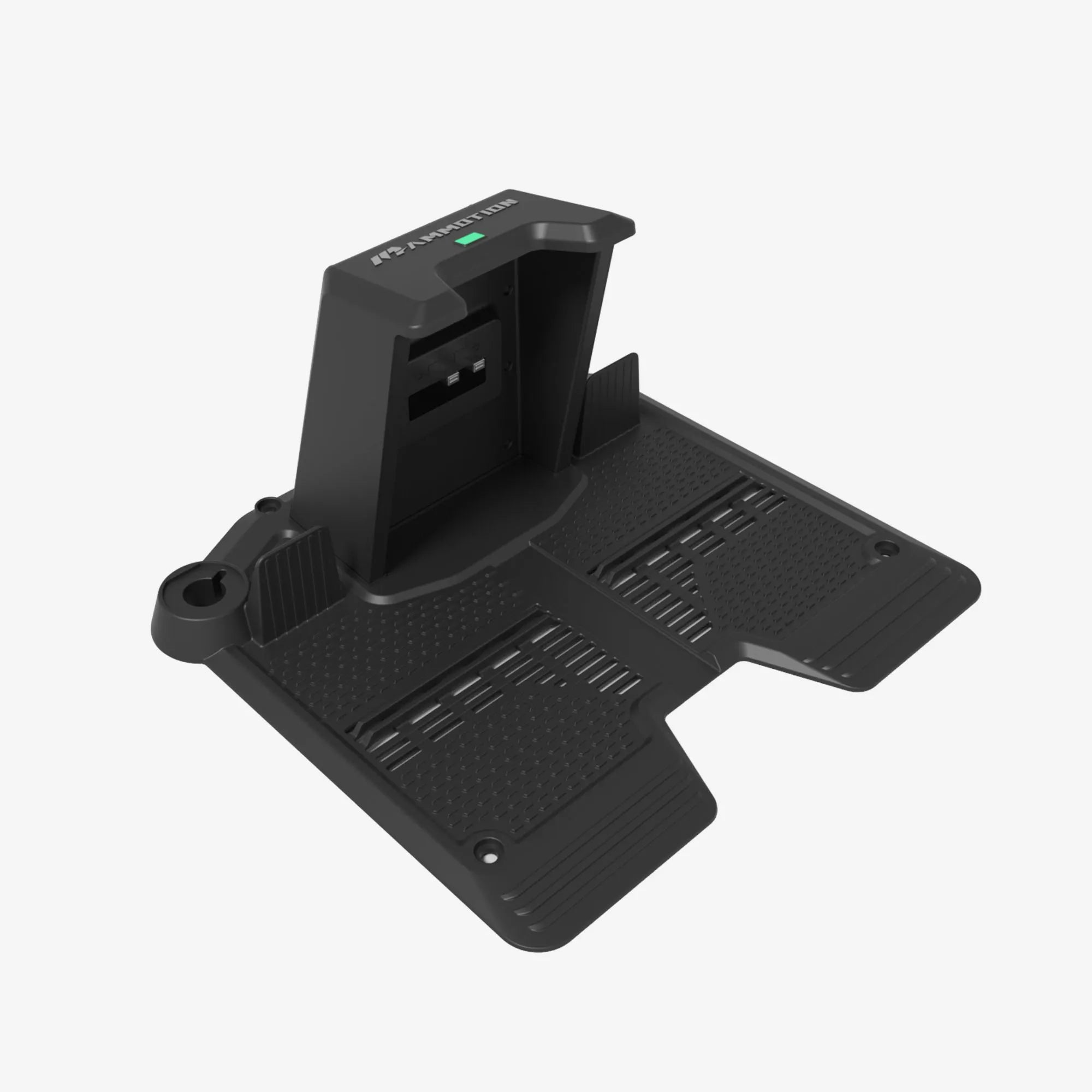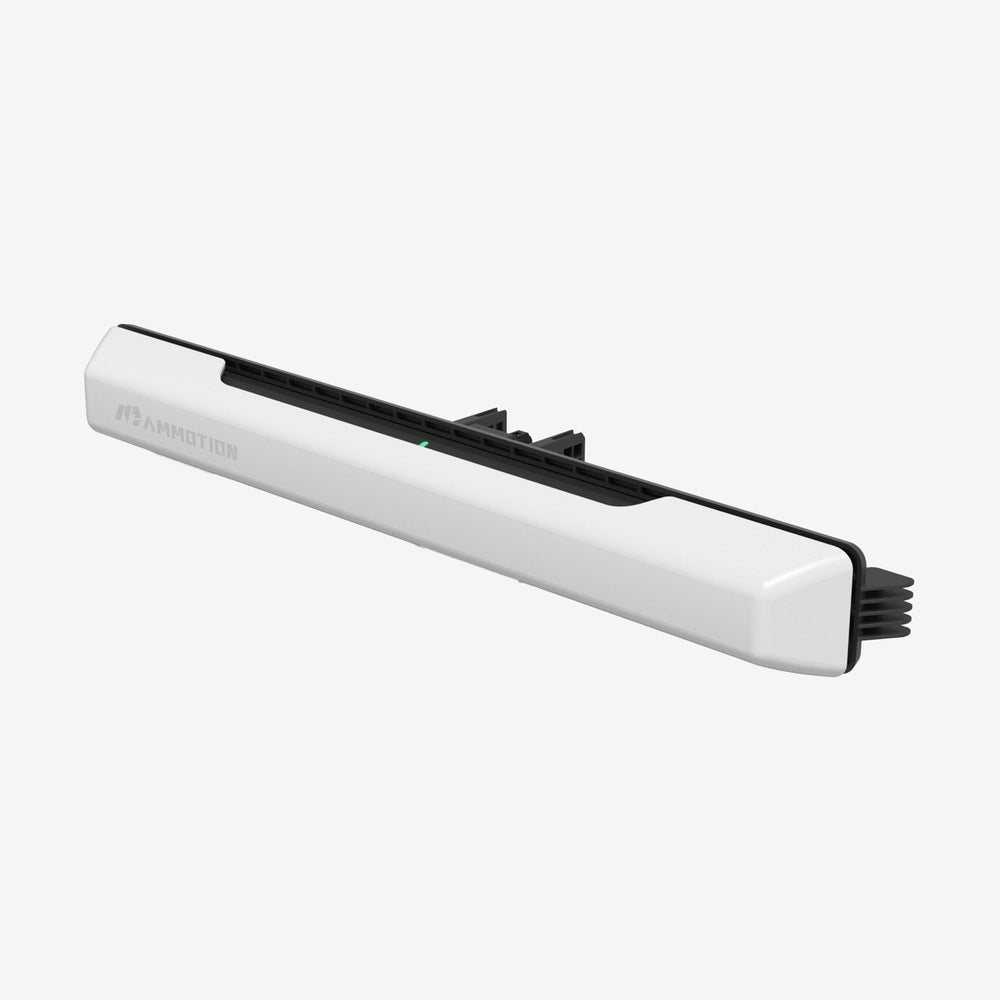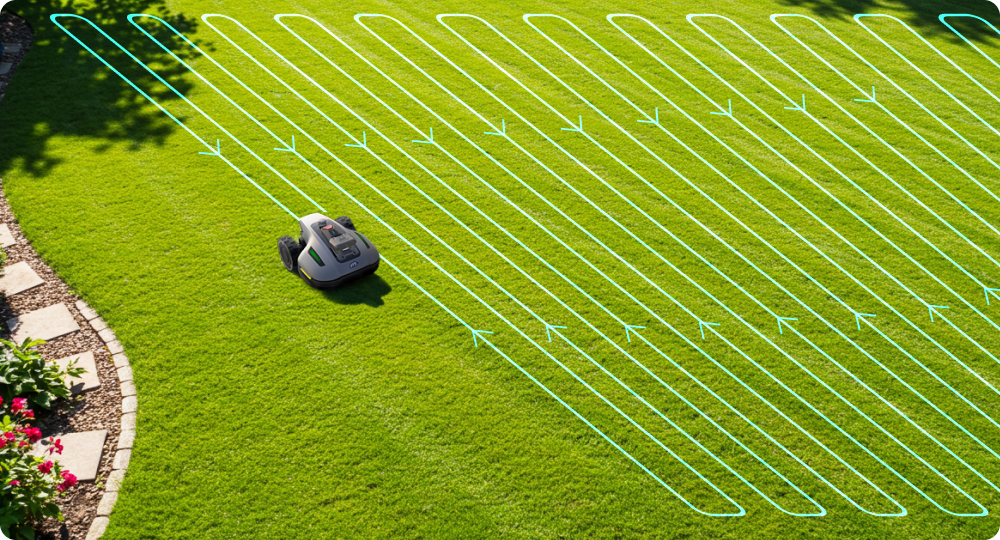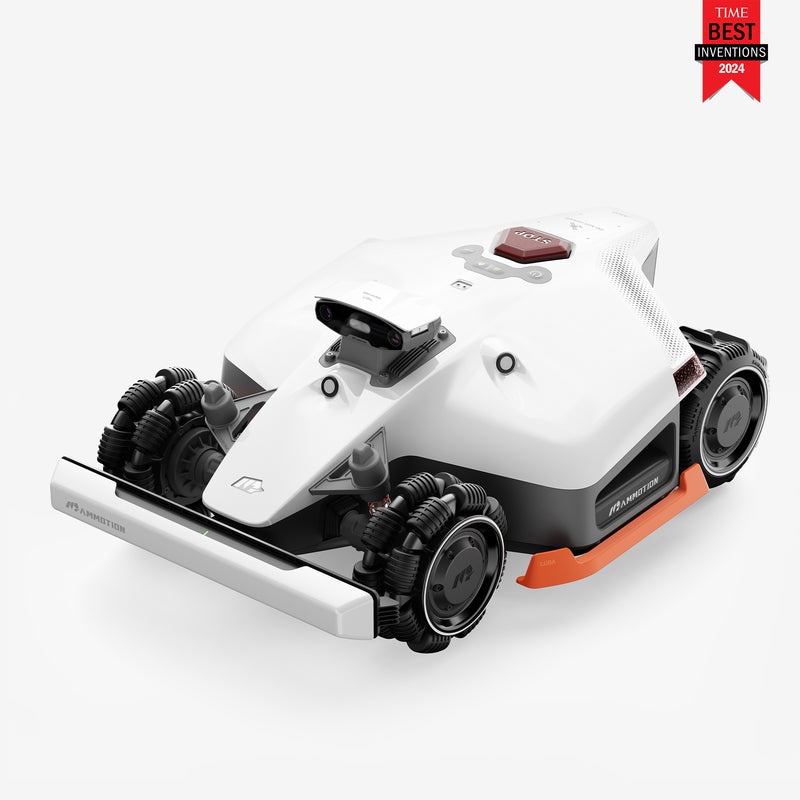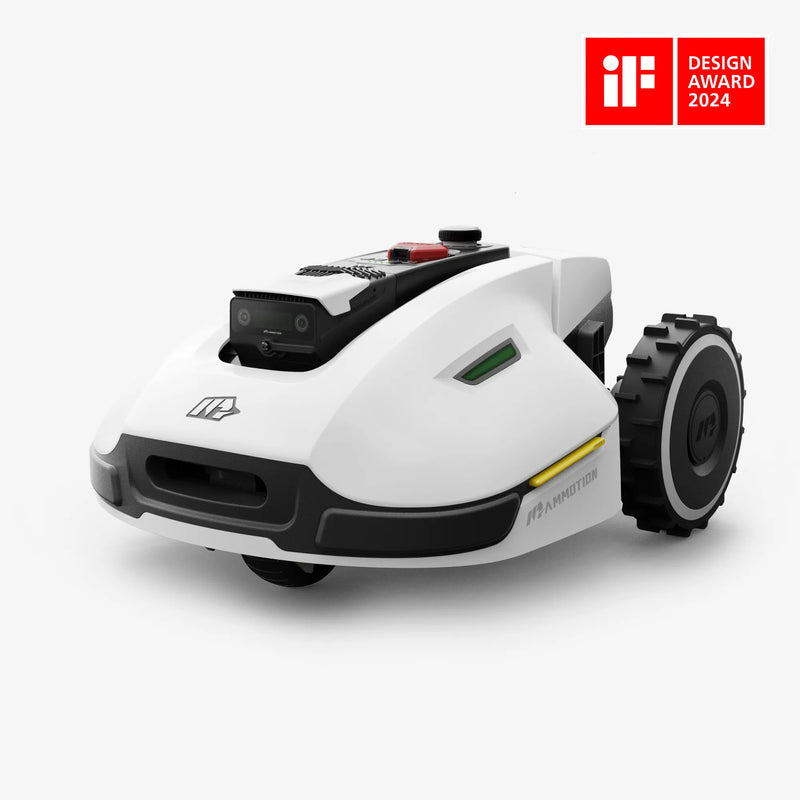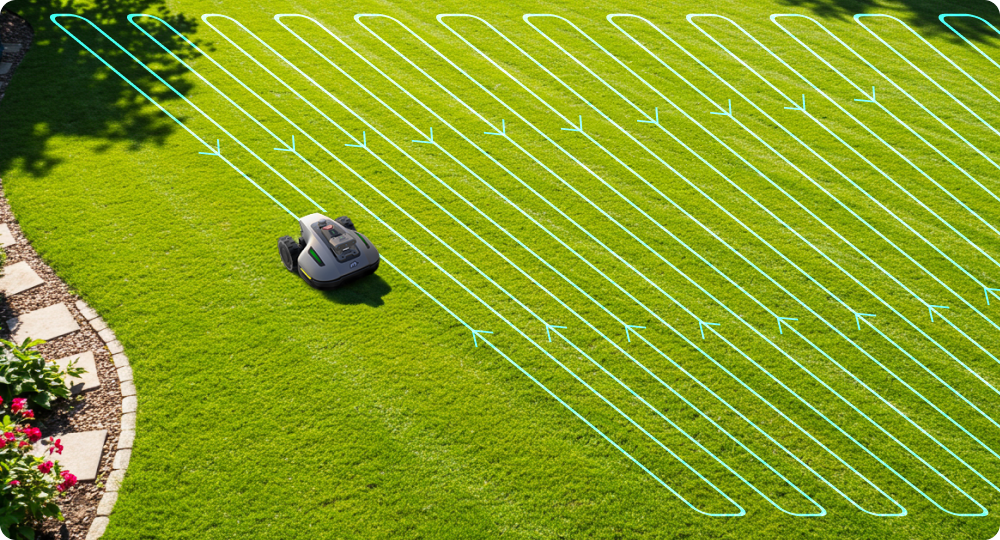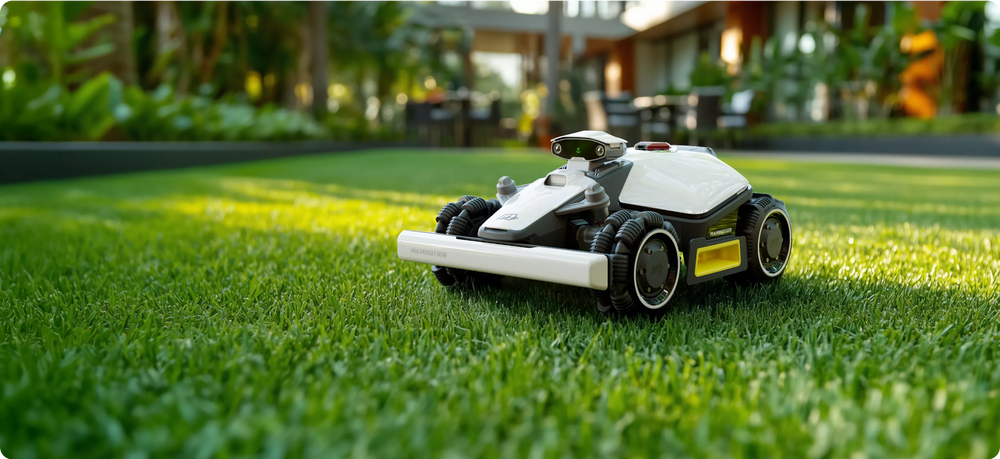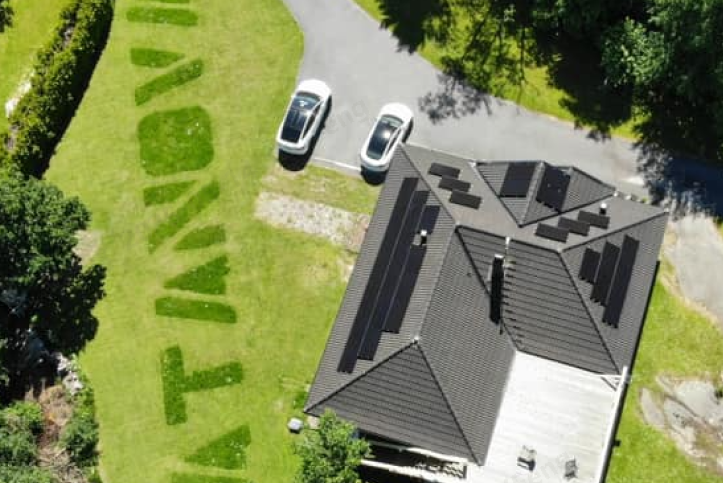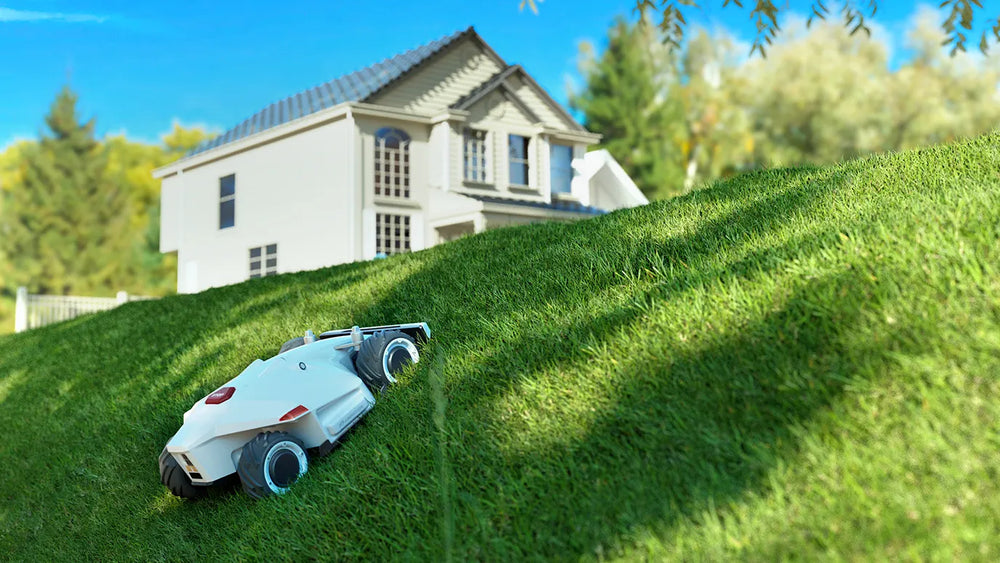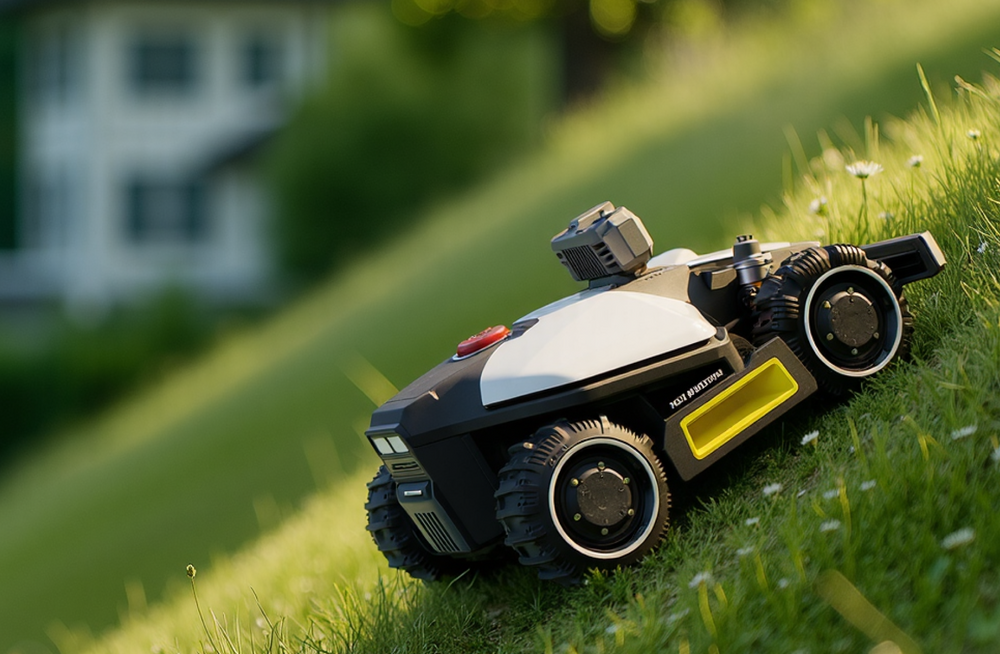Commercial robotic lawn mowers are revolutionizing the way large properties are maintained. From golf courses and school grounds to corporate campuses and public parks, these autonomous machines offer efficiency, precision, and safety that traditional mowers simply can’t match. For commercial users, selecting the right mower is more than just a convenience—it directly affects operating costs, manpower allocation, and lawn quality.
With advanced features like AI navigation, slope-handling AWD systems, and app-based scheduling, modern commercial robot mowers can tackle multi-acre properties with minimal supervision.
This article dives into the world of commercial robotic lawn mowers, covering key factors such as performance, maintenance, smart features, and real-world use cases. By the end, you’ll understand which models—like the Mammotion LUBA 2 AWD—are best suited for large-scale commercial properties in the UK and why investing in robotic mowing technology makes sense for your business or institution.
Part 1. What Is Commercial Robotic Lawn Mower
Commercial robotic lawn mowers are high‑performance, durable, and smartly managed machines designed to autonomously maintain large or complex turf areas such as sports fields, corporate estates, and public parks.
Unlike a lawn mower for home use, a commercial robotic lawn mower is designed for large estates, parks, golf courses, or professional landscaping; it features heavy-duty construction, wider cutting widths, long battery life, advanced navigation systems (GPS/RTK, AI vision), multi-zone management, and the ability to handle steep slopes and uneven terrain, making it suitable for continuous, high-intensity use.
Commercial Robotic Lawn Mower Suitable Scenarios
Commercial robotic lawn mowers are designed for professional or large‑scale turf maintenance, not just ordinary domestic gardens. Typical scenarios include:
- 1. Sports fields, training pitches, golf course fairways.
- 2. Corporate estates, municipal green spaces, large public parks — where there’s a need for continuous, reliable mowing with minimal manual intervention.
- 3. Multi‑zone grounds, large campus landscaping, areas with heavy foot traffic — requiring high performance, durability, smart management, remote monitoring.
- 4. Rough terrain, steep slopes or complex layouts (narrow passages, obstacles) where “industrial” grade capabilities matter.
If you manage grounds significantly larger than a typical residential lawn (thousands of m² rather than hundreds) and need robust, high‑uptime performance, a commercial robotic mower is appropriate.
Commercial Robotic Lawn Mower Price
Expect £2,000+ for entry‐level commercial robotic mowers in UK, with mid to high end models ranging up to £10,000+ (or more) depending on area coverage, slope capability, technology, brand & features.
Part 2. Why Commercial Robotic Lawn Mowers Are Essential for Large Properties
Maintaining large commercial lawns—like golf courses, school grounds, or corporate campuses—presents challenges that traditional mowers struggle to address. Manual mowing requires significant manpower, regular fuel costs, and constant supervision to ensure safety and uniformity.
Over time, this not only increases operational expenses but also introduces risks like operator fatigue, uneven cuts, and accidental damage to landscaped areas.
Commercial robotic lawn mowers are designed to solve these pain points. They operate autonomously, navigating complex terrains using AI-driven mapping and obstacle detection. Some key advantages for commercial use include:
1. Time Efficiency
Robotic mowers can operate unattended, freeing staff for other maintenance tasks. A single unit can cover several acres per day depending on battery and model.
2. Consistent Lawn Quality
Precise cutting patterns ensure even grass length and healthier turf, reducing the need for additional landscaping corrections.
3. Cost Savings
While initial investment is higher, reduced labor, fuel, and maintenance costs provide long-term savings.
4. Safety & Compliance
Autonomous mowers minimize human exposure to moving blades, steep slopes, and heavy equipment. Many models, including Mammotion, come with built-in safety features like child locks, obstacle detection, and emergency stop functions.
Real-world case studies have shown that institutions using commercial robotic mowers experience up to 50% reduction in labor hours for lawn care, along with improved visual appeal and turf health.
For instance, a UK-based golf course replaced its fleet of petrol mowers with robotic units and saw consistent turf maintenance while reducing staff requirements.
Part 3. Key Features and Specifications to Look for in Commercial Robotic Lawn Mowers
When selecting a commercial robotic lawn mower, understanding the features that impact performance, safety, and efficiency is crucial. Not all robotic mowers are created equal, and large properties require models capable of handling heavy workloads while maintaining turf quality. Here’s a breakdown of what to prioritize:
1. Power & Slope Handling
Many commercial sites include steep banks, terraces and uneven terrain—this is where AWD or 4‑wheel drive becomes critical. For example, some commercial robots claim slope handling up to 70% or more. You’ll want to check the “max slope” specification and traction system: machines that can maintain grip across large property zones can reduce risks of tipping or uneven cuts..
2. Cutting Technology & Adjustable Heights
Variable grass lengths and types demand mowers with adjustable cutting heights (20–65 mm) and dual or triple cutting discs. This ensures uniform cuts across different zones, reduces scalping, and promotes healthy turf. Many commercial robotic mowers also feature intelligent sensors to adjust cutting speed depending on grass thickness.
3. Battery Life & Efficiency
Commercial properties often span multiple acres, so battery runtime is a key consideration. High-capacity batteries (up to 8–12 hours) combined with fast-charging docks allow mowers to complete large areas without interruption. For extremely large sites, mowers with multi-zone scheduling enable automatic rotation between zones.
4. Smart Navigation & Mapping
Advanced models employ AI-powered navigation, creating virtual maps of the lawn. Features like UltraSense AI Vision and 3D lawn printing allow the mower to memorize terrain, avoid obstacles, and follow optimal cutting paths. Multi-zone management ensures complex properties are fully covered without human intervention.
5. Safety Features
Safety is a priority for commercial use. Look for mowers with:
- Obstacle detection to stop or navigate around objects.
- Lift or tilt sensors to immediately stop blades.
- Remote monitoring and emergency shutdown via smartphone apps.
6. Maintenance & Durability
Commercial-grade robotic mowers must withstand heavy use. Durable cutting discs, weatherproof housing, and easy access for blade replacement and cleaning are critical. Mammotion models are designed for long-term reliability, reducing downtime and service costs.
Part 4. Quick Comparison Table of Top Commercial Robotic Mowers
Mammotion commercial lawnmowers offer almost all the functions of commercial lawnmowers on the market and are chosen by many consumers for their precise mowing, strong climbing ability, and affordable price. Below is a list of different Mammotion commercial lawnmower models to help you choose according to your specific needs.
Mammotion LUBA 2 AWD 5000X/3000X
Mammotion LUBA mini AWD 1500
Mammotion YUKA 3000
| Model | Max Mowing Area | Cutting Height | Max. Multi-Zone Management | Engine/Drive | Slope Capability | Mowing Time per Charge | Positioning & Navigation System | Best For |
|---|---|---|---|---|---|---|---|---|
| Mammotion LUBA 2 AWD 5000X | 6000㎡ | 25-70 mm | 50 | AWD | 80 % (38.6°) | 190 min | NetRTK + Vision | Large estates, golf courses, complex terrain |
| Mammotion LUBA 2 AWD 3000X | 3600㎡ | 25-70 mm | 30 | AWD | 80 % (38.6°) | 190 min | NetRTK + Vision | Medium-sized commercial lawns, estate gardens |
| Mammotion LUBA mini AWD 1500 | ~1,500 m² | 25-65 mm | 20 | AWD | 80 % (38.6°) | 165 min | UltraSense AI Vision + RTK | Commercial gardens with tighter space, service contracts |
| Mammotion YUKA 3000 | 3000㎡ | 20-90 mm | 30 | 2-wheel drive | 45 % (24°) | 130 min | UltraSense AI Vision + RTK | Entry commercial robotic mowing, smaller site coverage |
Conclusion
As the demand for efficient, eco-friendly, and labour-saving landscaping solutions grows, commercial robotic lawn mowers are becoming the go-to choice for professional groundskeeping across the UK. They not only reduce maintenance costs and human effort but also deliver consistent, high-precision mowing that keeps large areas pristine year-round.
Among all available options, Mammotion’s commercial robotic lawn mowers — including the LUBA 2 AWD 5000X, LUBA 2 AWD 3000X, LUBA mini AWD 1500, and YUKA 3000 — stand out with their combination of intelligent navigation, multi-zone management, slope-handling power, and safety-first design.
Whether you manage a golf course, a school campus, or a private estate, Mammotion provides a tailored solution that balances technology, performance, and cost-efficiency.
Frequently Asked Questions
1. What is a commercial robotic lawn mower, and how is it different from a residential one?
A commercial robotic lawn mower is designed for large-scale lawn maintenance such as golf courses, schools, parks, and estates. Compared to residential models, it features higher battery capacity, wider cutting width, advanced navigation systems, and multi-zone management capabilities, making it ideal for maintaining extensive areas efficiently.
2. How large an area can a commercial robotic lawn mower handle?
Most commercial robot lawn mowers can manage between 3,000 m² and 50,000 m² depending on the model. For example, the Mammotion LUBA 2 AWD 5000X can handle up to 6,000 m² with precise boundary-free mapping, making it perfect for sports fields or large campuses.
3. Do commercial robotic lawn mowers work on uneven or sloped terrain?
Yes, high-end commercial robotic mowers are built with all-wheel drive (AWD) and smart traction control to handle steep slopes—some up to 80% gradient (around 38°). Models like the LUBA 2 AWD series ensure smooth operation even on challenging landscapes.
4. Are robotic lawn mowers safe to use in public areas like parks or campuses?
Absolutely. Commercial robotic lawn mowers are equipped with obstacle detection sensors, AI vision, ultrasonic radar, and child/pet safety locks. These safety features ensure automatic shutdown when obstacles or people are detected, making them suitable for public and high-traffic environments.
5. How do commercial robotic mowers navigate large spaces without perimeter wires?
Modern wire-free robotic mowers use RTK + Vision Navigation Systems, allowing them to create accurate virtual boundaries through app-based mapping. This means faster setup, flexible zoning, and real-time route optimization—ideal for large or complex commercial properties.
6. How much maintenance do commercial robotic lawn mowers require?
Maintenance is minimal. You only need to clean the blades, check the wheels, and update firmware periodically through the app. Compared to petrol mowers, these electric robots require no fuel, oil changes, or heavy servicing, saving both time and operating costs.
7. Can commercial robotic lawn mowers operate in rainy or wet conditions?
Most professional-grade mowers, such as Mammotion’s AWD models, have IPX6-rated waterproof designs, meaning they can withstand light rain and splashing water. However, mowing is usually paused automatically in heavy rain to protect cutting performance and ensure safety.
8. Are commercial robotic lawn mowers environmentally friendly?
Yes — they are fully electric, produce zero emissions, and have low noise levels (usually under 60 dB). This makes them a sustainable choice for businesses or institutions aiming to reduce their carbon footprint and noise pollution.


